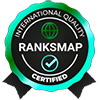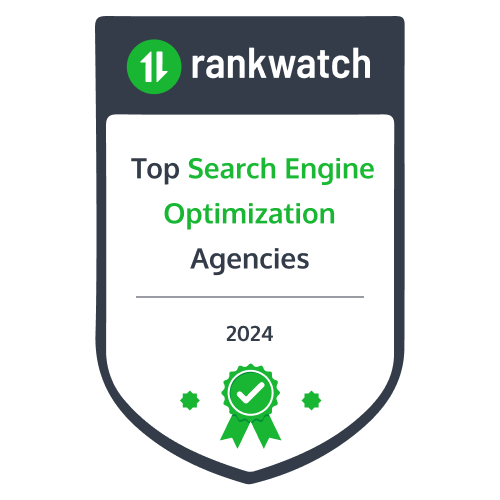There are few things in life more disappointing than finding your website not ranking on Google. With the amount of content available, finding the right answer on how to rank is generally hard to see. To help your site rank better you need to be sure of algorithms and have great content.
Let’s get started with our first ranking factor, i.e., choosing relevant keywords.
What is Google Ranking?
When someone enters a search query, Google ranking refers to the positon on which the web page appears on Google SERPs.
When you search for something on Google, the search engine displays a list of relevant web pages. The page on which these results are displayed is called the SERP. The order in which these pages are displayed is determined by Google’s ranking algorithm, which considers various factors to determine the relevance and quality of each page. A higher Google keyword ranking means that a webpage appears closer to the top of the search results, making it more likely to be seen and clicked on by users.
Why is it Important to Rank High on Google?
Achieving a high keyword ranking on Google is a primary goal for websites, and here are five reasons why:
- Increased visibility: Users tend to click and access the first few search results. Being on the top increases your odds of getting noticed well.
- Higher click-through rates: Users are likelier to click on links at the top of the search results.
- More organic traffic: Higher Google rankings result in higher traffic. This reduces the need to rely on paid advertising. You could spend thousands of dollars on paid advertising and struggle to break even
- Credibility and trust Users often think of higher ranking sites with higher credibility and trustworthiness. Ranking on the first page or in top positons implies that your site is reliable source of information.
- Better business results:improved visibility and increases salles higher organiic traffic and more leads.
Understand Your Current Google Rankings
To boost your Google keyword rankings, you need to know where the website currently stands in the search results. Do this manualy by entering target keywords into Google in incognito mode to prevent your personal search history from corrupting the search results. Or you can use tools like Rnaktracker or Spy serp to track rankings for you.
The second way is more insightful and efficient. Tools provide detailed insights into your website’s position for all the needed keywords across various locations and other data. For instance, you can monitor ranking fluctuations, check keyword cannibalization issues, or see the SERP features you get.
How to Improve Keyword Rankings on Google
Now that you grasp the significance of ranking highly on Google and know your current positions on SERPs, the question arises: How can you climb to the top of the SERPs? It’s a multifaceted journey involving numerous stages of website optimization. Let’s delve deeper into these pivotal steps.
1. Choose Relevant Keywords
THe goal with ranking sites on search engines requires certain measure of effort. Targeting both the right keywords and the right audience can improve your rankings. Creating optimized content will also boost your rankings.
Your site should reach the top much sooner with these steps.
- Pick out relevant keywords to your subject
- Idetify keywords your competitors rank for
- Use third party tools like the Google keyword planner
- Brainstorm ideas and identify LSI keywords
- Get active on Reddit and Quiora and find where audiences ask questions.
- Stay on the latest industry news to learn new jargons
Let’s look at the keyword ai writing. Below is the search engine result for the page that ranks first for that particular keyword.
Primary keyword: ai writing
Secondary keyword: what is ai writing
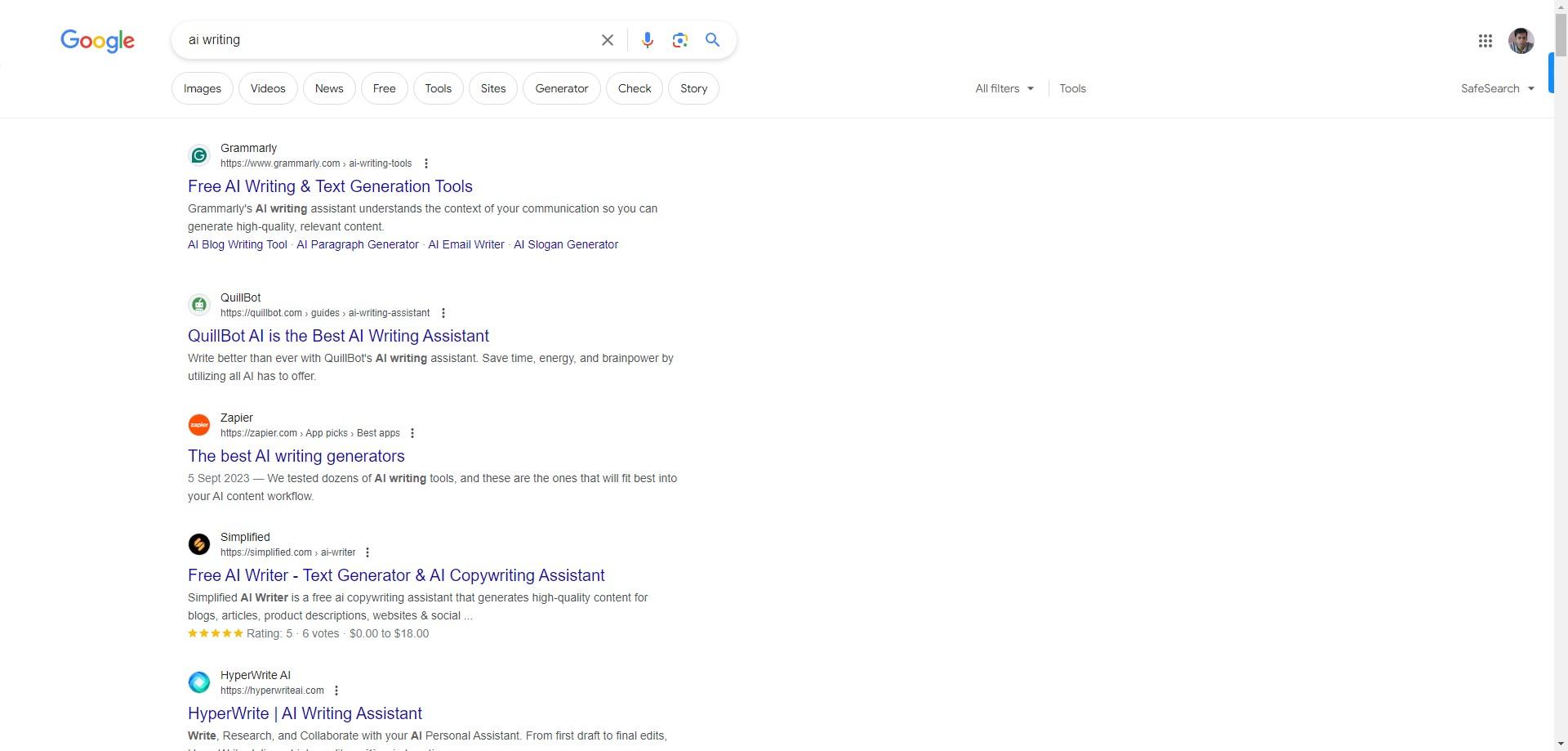
2. Do SERP Analysis
To perform better than your competitors and excel you must outdo them.
Achirinv this is based on careful analysis of strategies. Conducting thorough SEP analysis you get valuable insights into ranking better.
Upon selecting the right keywords, the next step is detailing SERP analysis.
Focus on
- Titles descriptions
- Assess format, structure and amount of text
- Keyword use and related terms
- Page speed mobile friendliness
- Link profile
- Organic traffic
Pay attention to SERP features for the query
3. Check Search Intent and Match Your Content to It
Understanding what users are looking for when they type in a specific query and tailoring your content to match that intent is essential for user satisfaction and search engine visibility. To effectively match your content with search intent:
1.Closely analyse keywords you are targeting. Are they transactional, navigational or commercial? This helps you understand its purpose. Are they looking for info, looking to purchase comparing different stuff or learning more about a certain topic?
2. Look at the top raniking pages for your content. Are they blog articles, product pages, compairon posts or guides?
This provides you with enough insight into the kind of content aligning with user expectations.
3. Create content to fulfill user needs based on their intent. For informational content offer better explanations. For transactional offer call to action buttons and more
By checking and matching the content to search intent you provide more value t users and increase the odds of better engagement.
4. Create High-Quality Content
So what’s high quality content. We can explain that in simple word.
Quality content accomplices its goals. 83% of b2b companies prioritize content marketing.
Content marketing is creating different content types and have them drive value for you.
These are the tips to consider
- Perform research on chosen keywords
- Create content that fulfills user requirements
- Make the content relatable to your audience
- Ensure the content flow is great
- Add resources from reputed sites in the post to increase crediblity of content.
- Opt for white hat link building
- Prefer different forms of content
- Feature infographics in your post
- Include videos and images in your post
- Review your content thoroughly
Some of the steps to create high-quality content are:
- Begin with proper introduction
- Ensure content is relevant to the keyword of choice
- Create click worthy title and include LSI keywords in the content
- The headings and subheadings have keywords and their variants
- Shorten sentences and paragraphs or list sentences as bulleted points
- Build an internal linking structure for sites
- Add images with alt text
- Incorporate callout boxes
- Update content with some frequency
In the video format of high quality content for keyword is what is machine learning
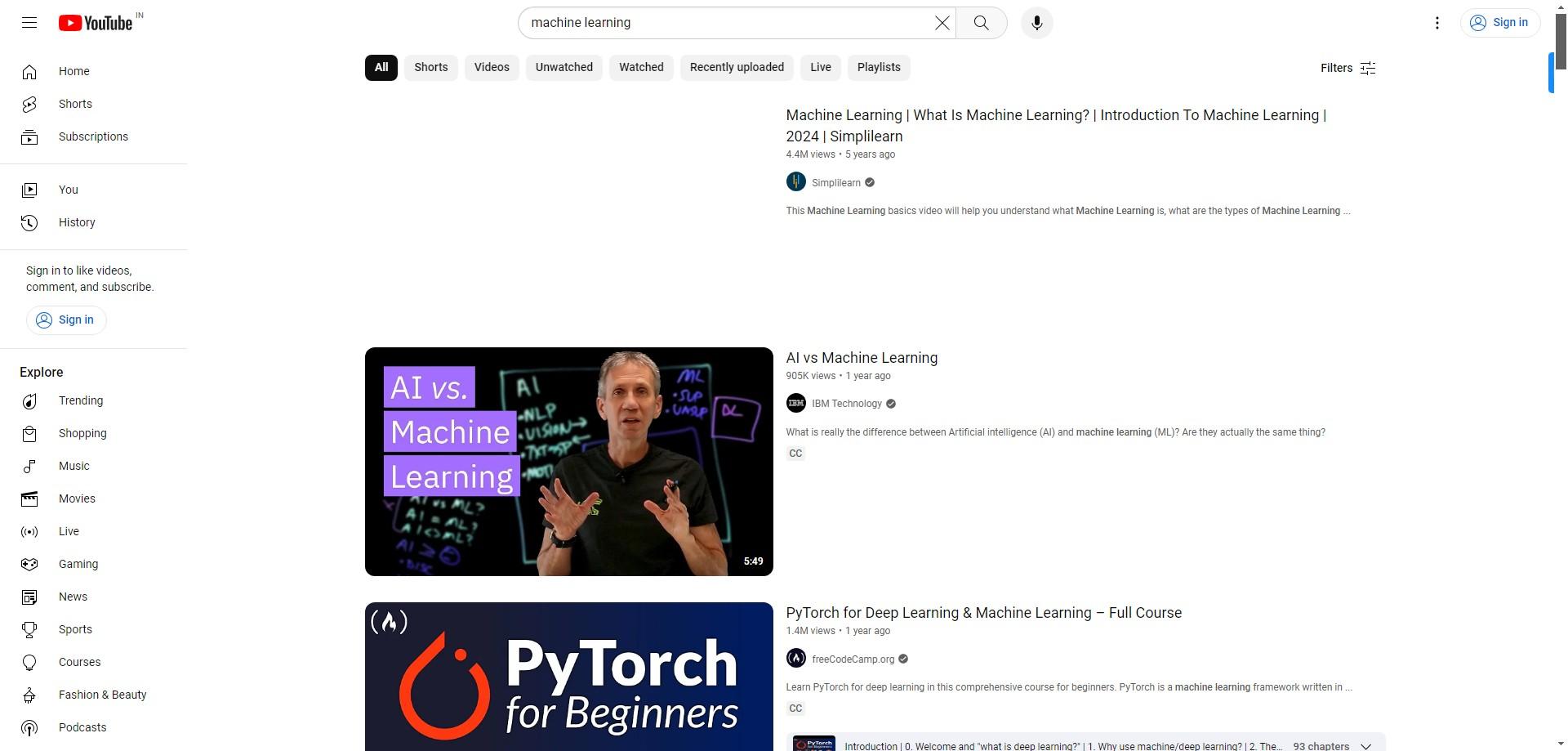
Talking about the next technique let’s go to optimizing on page SEO.
5. Optimize On-page SEO
On page seo is when you optimize on page elements like the title tag meta description and header tags.
- Optimziing on page SEO is easier than you think
Title tag
The title tag is web page title that appears on search engine results page.
Let’s dicuss some ways to optimize on-page SEO
- Watch the title tag. Ensure the description is between 50 and 60 characters
- Avoid stuffing keywords in the title tag
- Give pages unique titles
- Place important keywords first
- Write for readers
Meta Description
Summary of content on web page
- Ensure the description is between 50 to 300 characters
- Avoid keyword stuffing
- Use target keywords in the descriptions
- Impress readers with concise description of content
- Write call to actions in the description
Header Tags
The header tag provides structure to your site by identifying headings and subheadings of your web page.
Optimize your tags by:
- Include some keywords in the header tags
- Put just one h1 tag in the content
- Ensure the header tags sync with content
- Don’t repat the keyword
- Ensure the length of tags is minimum
So far, we have discussed 3 ranking factors on how to rank on Google. Next, we will look at how to optimize website level factors to improve website ranking.
6. Optimize Website Level Factors
Website level factors like sitemap, https signals and page speed are some three elements that will improve your rankings.
Sitemap
A sitemap is an important step to enhance site’s rankings by providing important information about some pages.
Some of the crucial ways to improve sitemaps are:
- Add quality web pages to the sitemap
- Add canonical versions of URLs in these sitemaps
- Opt to create dynamic URLs for a larger site
- Ensure a smaller sitemap
- Avoid no index URLs in the sitemap
Using sitemaps help improve site visibility and result in better indexation.
Security
Sites with the https ranking factor help improve rankings and Google calls HTTPs a ranking factor.
Some ways to improve site security are as follows
- Scan the site for SEO vulnerabilities you may find
- Secure domain with DNSSEC protocol
- Use SSL
- Use HSTS and add extra layer of security
Page Speed
It’s an important ranking factor. It is the time taken to load content on web page.
Page speed with poor performance results in a high bounce rate and low average time spent on the web page.
Below are the ways to optimize page speed:
- Optimize images that are bigger in size say 150 bytes or more
- Choose a simple site design
- Leverage browser caching
- Upgrade server response time
- Minimize redirects and optimize your code
Page speed that have poorly performing factors improve the high bounce rate and lower time spent on the page.
Neil Patel said that Walmart’s site faced lower conversions when page speed went up from one to four seconds.
7. Gain Links to Your Site
Acquiring backlinks from other websites helps improve rankings.
Neil Patel says people never scroll past he first page. So you need to bring pages from 3rd or fourth page to first page.
Building external links to your site can improve organic search rankings.
Some benefits are
- Improve search visibility
- Increased domain authority
- Improves credibility and trust
What’s a quality link and how to build them.
Go for guest blogging
Build links from reputed directories
- Go for testimonial link building
- Promote content on social media
- Use resource links from different sites
Pages with more links rank higher than web pages with fewer links
8. Improve Site Structure
A good site structure gets your site links.
Its essential to group content inside categories based on search queries so Google knows what tod display on the SERPs.
A defined site architecture improves ranings. Bots can access and index the content thart results in better web page rankings.
- Have a logical hierarchy on your site
- Balance both categories and sub categories
- Use CSS or HTML code for site navigation
- Build internal links
- Review links in the footer
- Create a URL structure that follows navigation hierarchy
- Create breadcrumb navigation as it improves internal linking
Keywords are important for rankings but subject relevance too is important. It’s one way to accomplish this through good site architecture.
Below is a great example of logical site structure and where individual pages are connected well together.
9. Use Internal Linking
Internal linking is one of the least used powerful strategies in SEO. It helps people navigate the site and promote the main pages of a particular topic well.
By passing link juice you can also signal search engines the relevance of specific pages.
There’s no way to do this without internal linking. Add internal links in menus like footer, sidebar and headers. This gives search engines easy access to important pages and improves site structure.
Add contextual links across essential pages on your site. Link together relevant content.
The great idea here is to create content hubs identifying great content pieces that cover broader topics and pages to these hubs forming content clusters that signal the site expertise.
Avoid linking just for the sake of building internal links. Use a proper anchor text plan and give readers and search engines an idea of what’s going on.. Use GA and other tools to identity even more internal linking opportunities.
This boosts engagement and refines your approach.
10. Add Schema Markup
Schema markup called structured data is a unified code that provides context to search engines about content on your site.
Schema markup enhances search engine results by creating rich snippets and extra details beneath a search result. You will see ratings, price, phone numbers andother similar details.
Schema markup benefits mobile users and voice searcher by adding concise information that’s easy to consume.
Adding schema markup is possible through Google’s structured markup helper or markup generator.
The final code could be added to the page through site’s admin panel
You can also implement structured data with the help of CMS. All in One Schema Rich Snippets and JSON-LD structured schema.org are some examples. Joomla uses Gtoogle structured data.
11. Target long-tail, question keywords
Keywords should ideally be somewhere between volume and competition. Long tail keywords are generally a bonus because they give you additional opportunities to show up for high volume keywords through the people also ask section.
Social media marketing gets 32000 searches. But there’s also the PAA section. If a reader reads one of the questions the result there is the number 2 result which gets clicks.
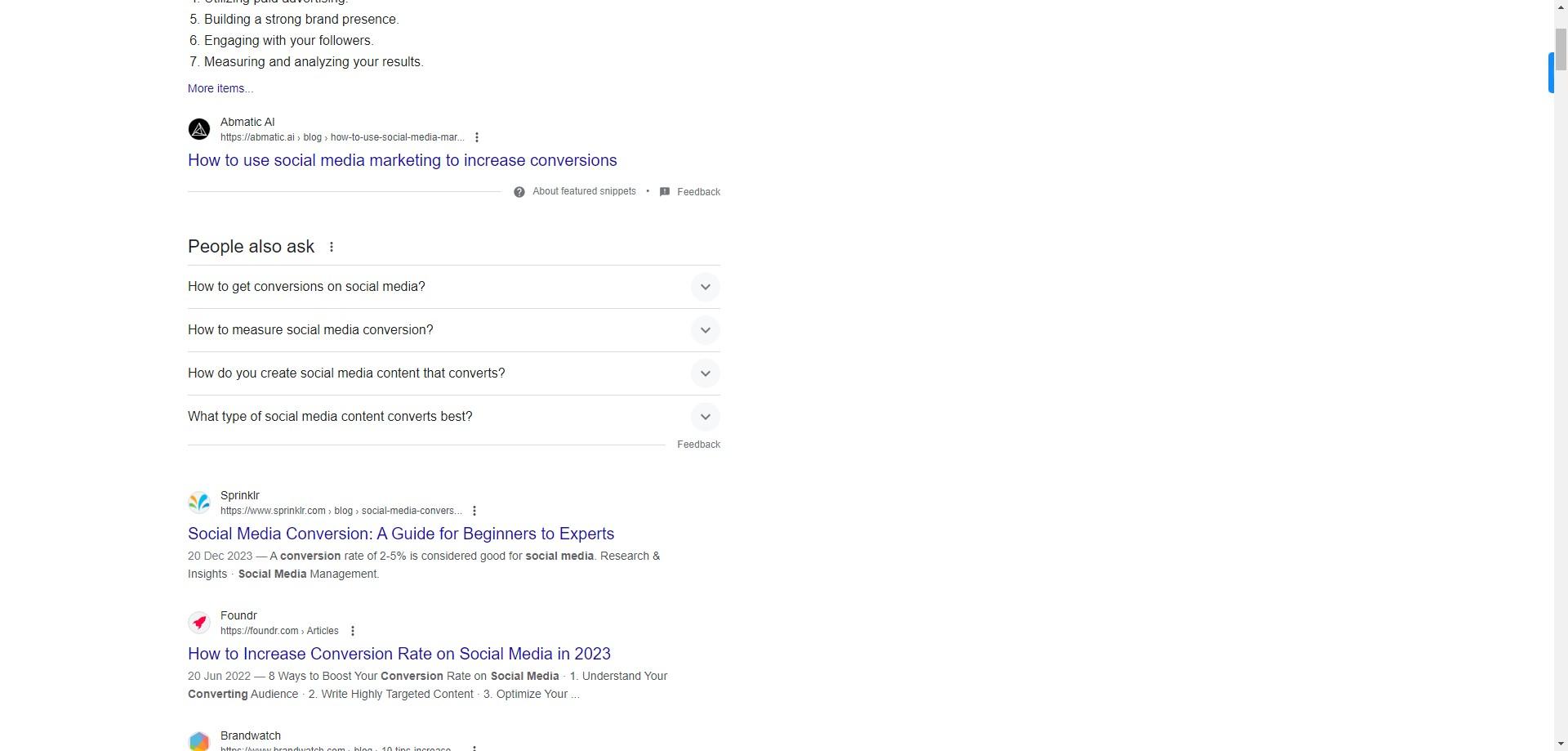
You don’t know which long tail keywords Google will add in PAA giving you a choice to rank higher for the number 2 result.
12. Make your information skimmable
Google is providing answers than just a list of pages. That’s why the term zero click search exists. This isn’t great for driving site traffic but being the source from which Google builds an answer is the next big thing.
THe best way to optimize for this is by making content easy to skim. This helps them extract desired snippets and build answer like results in featured snippets, passage rankings and meta descriptions.
- Use your heading tags. Every site builder gives you h1 and h3 and h2 tags. For example many posts here use the h3 headers.
- Use specific headings.Being an SEO sometimes limits your creativity. So people should be able to skim through the entire content by just reading the headings of the article to get immediate answers. You can see that Google bypassed the meta description in the above post and built one based on h2 and h3 headings.
- Had we used more playful or colorful language here, the post may not perform as well. What do I mean? Check this chart:
| Unclear heading |
Clear heading |
|---|---|
| X marks the spot | Identify your target audience |
| UVP is the MVP | Create your value proposition |
| Save the whales | Determine your mission |
| Humans only, please | Define your brand personality |
| Get creating | Create brand assets |
The easier you make it for people to extract info the easier it is for Google as well.
13. Make explicit statements
When targeting question keywords even in multi part answer ensure you use explicit statements somewhere in hte post to provide clear answers while also restating the question.
Conclusion
We just saw how you can use keyword research and other tactics to rank highly on Google.
Do let us know if you found the post useful.



